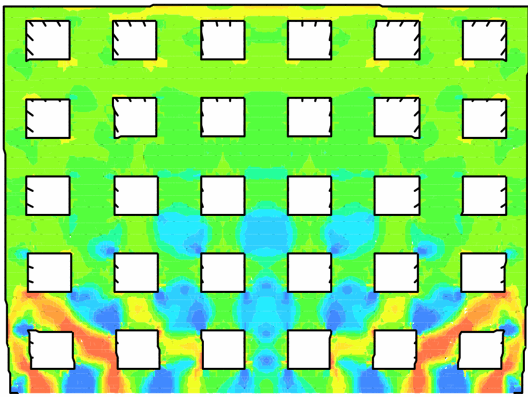D.R.W. Martens[1] A.T. Vermeltfoort2
- Professor
- Ass. prof. Eindhoven University of Technology, Dep. of Structural Design, BKO, P.O. Box 513, Postvak 7, 5600 MB Eindhoven. The Netherlands.
ABSTRACT
In the Netherlands, a tendency is recognised to make more and more movement joints in veneer walls. Consequently, these walls act like rigid elements in which all deformation concentrates in the movement joints. In surrounding countries (e.g. Belgium) the spacing of vertical and horizontal movement joints is much larger. Questions that arise are: how much movement joints are needed to prevent cracking, and when cracks occur which crack width is acceptable?
The paper describes different crack-causing parameters, some explorative studies and several research items. An inventory of cracking in facades was made, as well as literature surveys concerning the shrinkage and temperature deformation of masonry walls [Vermeltfoort & Martens]. In order to determine the most critical areas in a veneer wall, the stress distribution in facades with and without movement joints was numerically simulated with the finite element program DIANA.
Based on the explorative studies, three proposals for fundamental research at PhD level are presented to study: a) the masonry stiffness aspects such as: how to make a soft mortar and the effect of open perpend joints, b) the execution aspects like stress distribution in and around lintels during building and c) the architectural aspects such as: detailing of walls, the use movement joints and crack-control.
PhD candidates are invited to reflect.
Key words: veneer wall, movement joint, cracking parameter
veneer01



